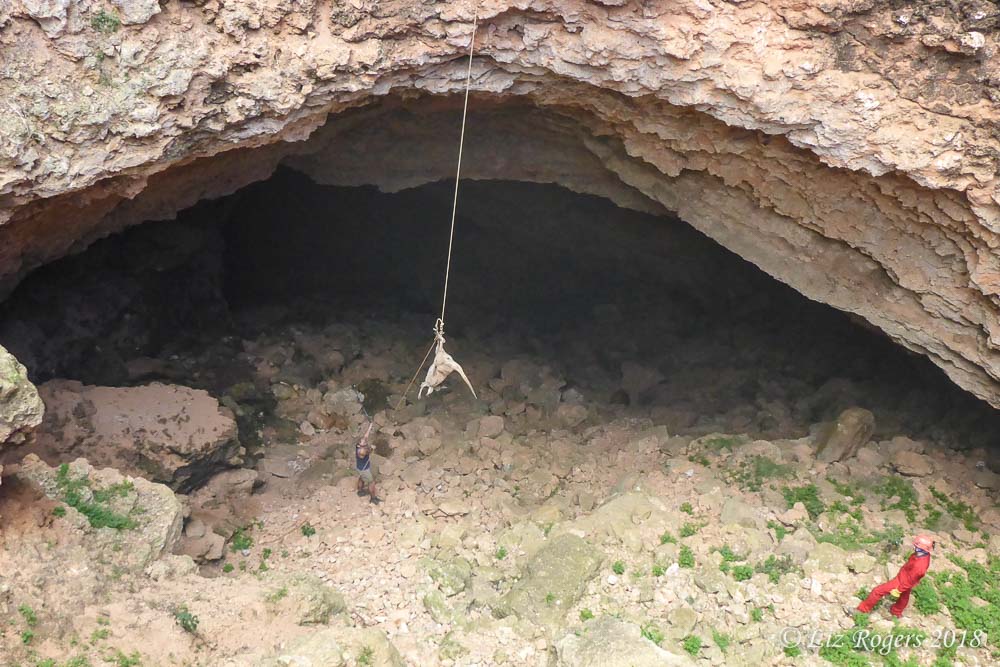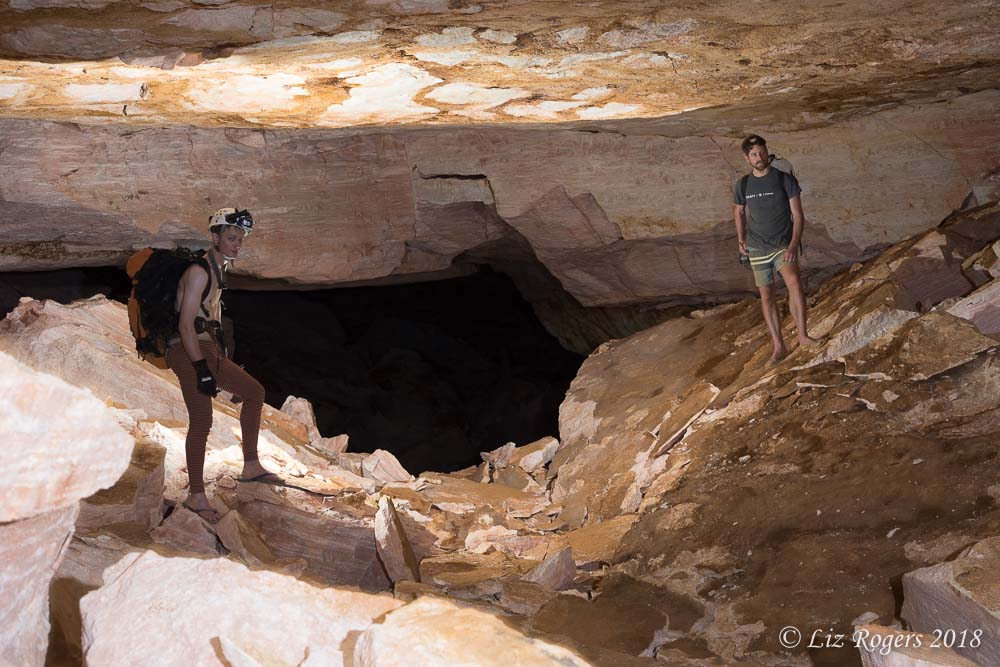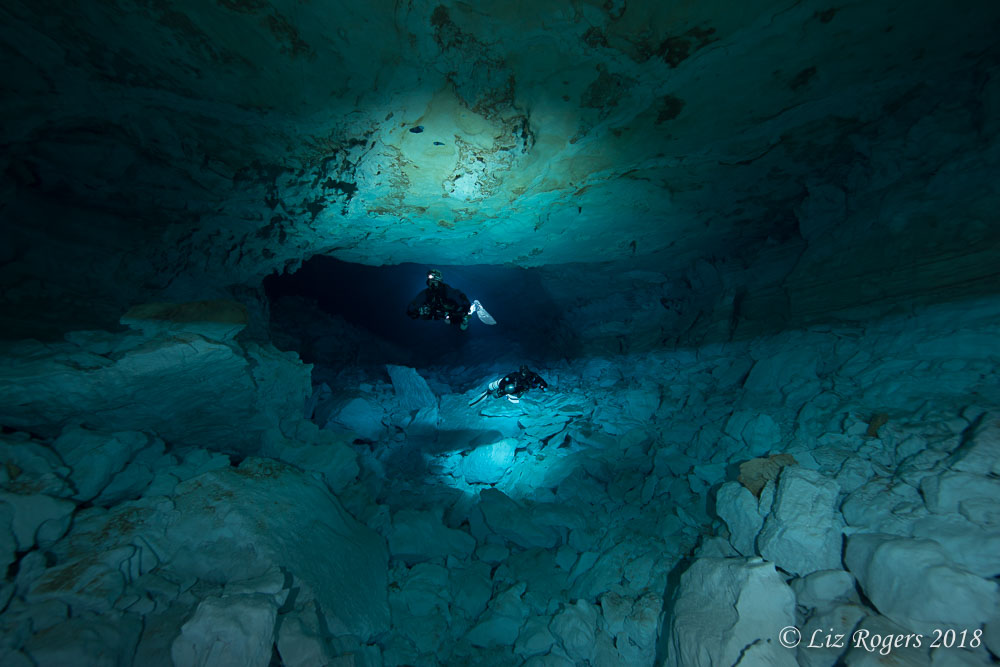Any expedition that begins with hauling a freshly dead kangaroo out of the cave entrance can only get better from there. We arrived at Cocklebiddy Cave in the dark two weeks ago and set up camp, ready to lower gear over the overhang in the morning. Dawn revealed a medium sized roo in the doline with a broken neck who had failed his first BASE jumping lesson. The first pair of tanks came down on the rope, and the roo went up on the same slings. The thought of having to put up with decomposing remains when we surfaced after the dives was too much. Life lesson though – next time put Skippy further away from the tents up top.

By the end of the day we had lowered down the rope then lumped over the rocks 20 large tanks, 15 small tanks, 3 rebreathers, 8 scooters, 16 caving bags of gear, 4 large dry tubes, 2 “stage batteries” and our underwater sled to the water’s edge. In addition to the breathers, scooters and bailout bottles that Cocklebiddy dives require, we took food, water, batteries and camping gear. 40 gallons of drinking water in plastic bladders made sloshing noises in our caving bags as we rockhopped down to the water.
Two days later we were geared up with the sled prepped and ready to dive. The tanks, bags and dry tubes clipped to the sled to form a floating caravan. The massive advantage of the sled is that we didn’t have to individually weight each piece of gear to be neutral. The sinking overpumped steel tanks were offset by the dry tubes full of sleeping bags and sorb. The sled has a core of solid buoyancy chambers that can be individually flooded to bring the whole rig to neutral.
The first sump is 3000 feet long, 30 feet deep and normally takes 35 minutes to scooter through. With each of us towing our long range scooters and emergency wetsuit bags, and fighting an un-cooperative sled, we made it to the first rockpile in 84 minutes and a bad mood. The best way to improve your mood is with way too much exercise, and carrying 2,000 pounds of dive gear over the first rockpile was just what the doctor ordered.

On the other side of the first rockpile, the blue water of the sump 2 borehole tunnel disappearing between white walls definitely helped me achieve a better frame of mind. We clipped everything back together in the water, rigged my old red Classic wing to a bailout tank for improved variable buoyancy control on the sled, and scootered back to the entrance for our last night topside.

With the sled of gear waiting on the other side of the first rockpile, it took us 8 hours to go from the entrance lake, over the first rockpile, hook up the sled and scooter through the 9000 feet of sump 2 to surface in Toad Hall. On a day trip anyone hoping to explore sump 3 would then spend several hours carrying their gear across 1000 feet of dry cave before doing a 4 to 6 hour dive in sump 3. They’d then have to reverse the process and hope to be back on the surface before the sun came up next morning.
The extreme logistics are part of the reason so very few divers make an attempt on the end of the cave. The last person to extend the line was Craig Challen ten years ago, and the person before that was Chris Brown in 1995. By echoing the sled technique of the original explorers of the 80’s, we were able to climb up out of the water into Toad Hall and set up a comfortable camp. By the time the sun presumably rose over the desert above our heads the next morning, we were fresh and ready to tackle sump 3.

Over the five days camped in Toad Hall we each completed long dives in sump 3. We also slept comfortably and ate well, key parts of feeling mentally ready for push diving a long way from home and help. The dive gear we took with us stood up to the rigour of days underground and underwater, and helped us hit the expedition’s planned photographic and exploration goals. Next up, results!











